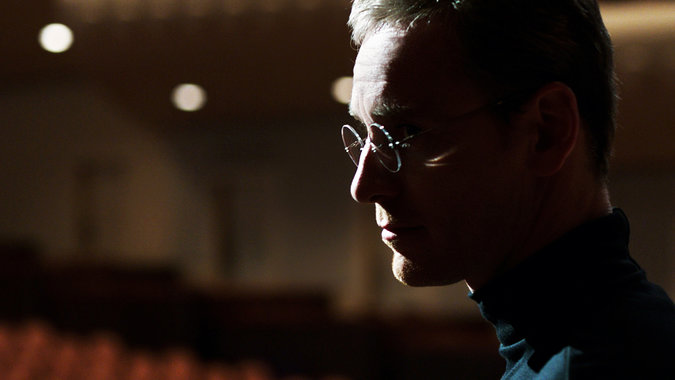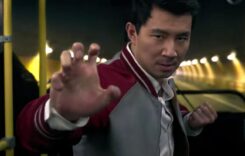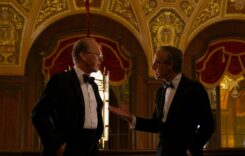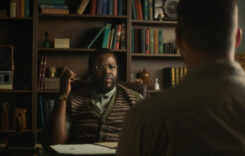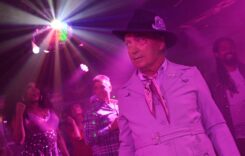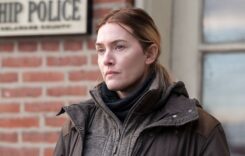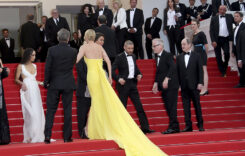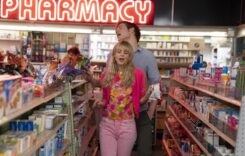NOVEMBER 4, 2015
On Sunday, October 11, the movie world was all agog talking about the opening weekend gross of Danny Boyle’s new film, “Steve Jobs.” The film had just opened in 4 theaters and averaged a 3-day total of $130,000 per screen, which is spectacular, by far the highest weekend average of any film this year.
Two weeks later, Universal opened the film wide across the country, and once again “Steve Jobs” was the talk of the movie industry.
Because it tanked, averaging only $2800 per theater.
Having not yet seen the film, I was baffled. This was already a proven hit in other cities. It has Oscar winners behind and in front of the camera. “Steve Jobs” was supposed to last through the Academy Awards next February, and it is now going to have to struggle even to keep playing in theaters this weekend. How could this be?
Then I saw the film. In fact, I’ve now seen “Steve Jobs” twice within four days, because it has taken two viewings for me to completely wrap my head around it. I can see, though, why audiences are hesitant about showing up — it’s a big, difficult film about the big, difficult life of a not-very-sympathetic icon. In addition, director Boyle and screenwriter Aaron Sorkin have not made it any easier for audiences to relate to the material, thanks to the ingenious but challenging way that they have structured and shot the film.
Though nominally based on Walter Isaacson’s 2011 best-selling biography of the Apple CEO, Sorkin’s script shows little interest in presenting a conventional birth-to-death biopic. Instead, he isolates a trio of incidents from Jobs’ career and has created basically a three-act play. Each act is set in the half-hour before Jobs (Michael Fassbender) is poised to take the stage to introduce a revolutionary new product, and in each, he works with or is confronted by the same five characters.
His right hand aide and self-proclaimed “work wife” Joanna Hoffman (Kate Winslet) wants Jobs to acknowledge the paternity of his out-of-wedlock daughter; Apple CEO John Sculley (Sorkin veteran Jeff Daniels) wants to protect Jobs from his own excesses; Apple co-founder Steve Wozniak (Seth Rogen, in a fine dramatic turn) pleads with Jobs to acknowledge the contributions of his Apple 2 team from the stage; engineer Andy Herzfeld (Michael Stuhlbarg) expresses his frustration at Job’s repeated demands and Lisa, the daughter of whom Jobs denies paternity and who is played by three different actresses of differing ages, simply wants a father.
Sorkin is known for his flowing, theatrical dialogue but in “Steve Jobs,” the dialogue is really theatrical, right down to the situations. For example, in what real world would five different people individually choose to confront a powerful executive just when he’s about to walk onstage…three different times? Somehow here, in the hothouse of a backstage area, Sorkin manages to make the whole structure believable. (He even shines a light on the absurdity of the set-up when he gives Jobs the line “It’s like five minutes before every launch, everyone goes to a bar, gets drunk, and tells me what they really think of me.”)
For his part, Boyle mirrors Sorkin’s 3-act differentiation by shooting each act with different stock and musical accompaniment:
- Act 1: For Jobs’ rollout of the Macintosh in 1984, Boyle has shot it on 16mm film with a synthesizer soundtrack.
- Act 2: After Jobs is fired from Apple, he invents a computer for his new company NeXT, which he calls the Black Cube. For the NeXT launch in 1988 at the San Francisco Opera House, Boyle uses 35mm film, as well as a full orchestra.
- Act 3: Finally, after Jobs returns in triumph to Apple to unveil the iMac in 1998, Boyle shoots it digitally and uses an electronic score as background.
Technically, it’s quite an achievement, but for the film to click with audiences, it needs to be involving emotionally, and there it runs into some trouble. Sure, there’s a lot of Silicon Valley gobbledygook, but the primary obstacle is Sorkin’s insistence on keeping Jobs at arm’s length. So if Fassbender’s performance is sometimes described as chilly, that’s because the actor is playing the script expertly. He is not afraid of revealing Jobs to be a cruel asshole at times, especially to those closest to him, but Fassbender does it in a smartly disciplined way, slowly building the character’s relatability, so that, by the film’s final shot, there’s a chance that Jobs might actually become an OK guy.
As might be expected, the acting is top-notch. Rogen has two confrontational scenes with Fassbender that just crackle. Daniels has been specializing in business executives lately (most recently in “The Martian”), but Sorkin has given him a number of especially juicy scenes, and Daniels makes the most of them. Stuhlbarg (“A Serious Man”) provides a backbone to what could have been a completely nebbishy character. And the three actresses who portray Lisa (Makenzie Moss at age 5, Ripley Sobo at age 9 and especially Perla Haley-Jardine at age 19) provide both the innocence and defiance that provides Fassbender a wide open field to do what he does best.
Then there’s Kate Winslet. As one of this accomplished actress’ very best performances, Joanna, a Polish émigré who is fiercely loyal to her boss yet one of the few people around Jobs who can speak truth to power, is the heart and soul of “Steve Jobs” in a film that could use it. Great work.
I know that I have used the word “difficult” and “challenging” a lot when referring to “Steve Jobs,” which might seem like code for “Stay away!” Don’t. Yes, it’s not a film that you can sit back and let wash all over you. The ride requires you to pay attention here. But there is much to be gained if you stay with “Steve Jobs,” and you will be glad you did.
As I am finishing this review, I am writing it on a beautiful MacBook Air. Thanks, Steve.
GRADE: B


